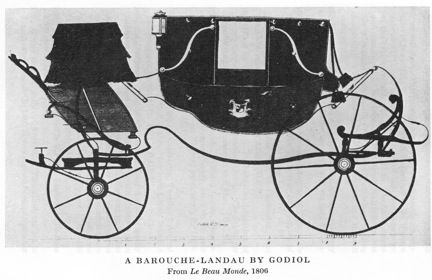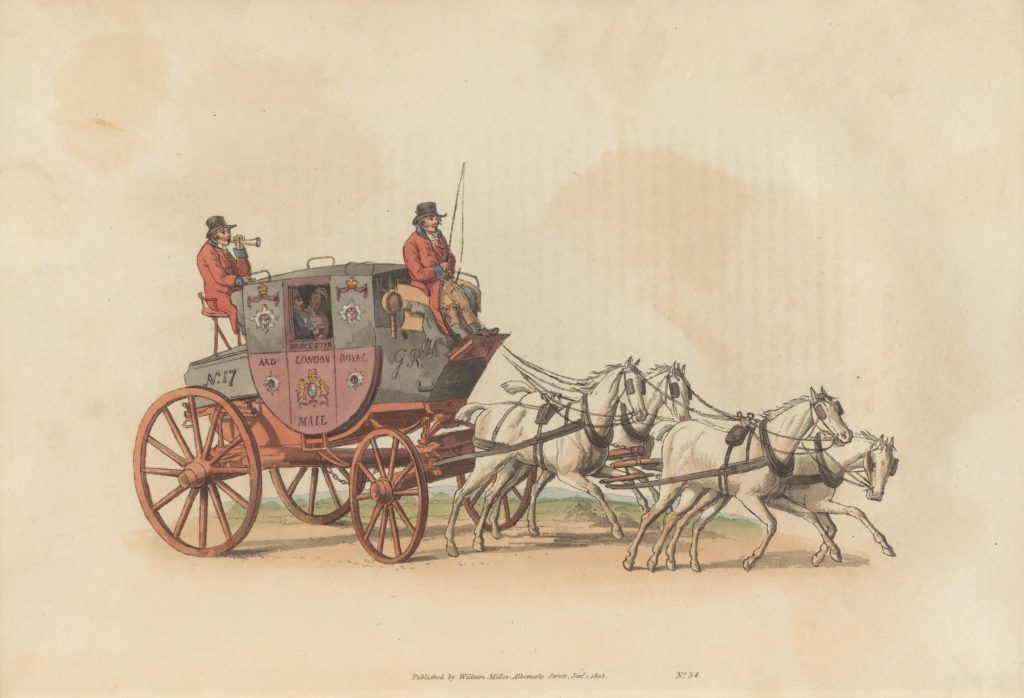This one came in from a search engine search, and a quick look on the top results showed why they ended up at Regency Reader…not a lot of information!
So if you were ever wondering about night driving in the 18th/19th century, or just generally driving in the dark in a Regency carriage, we have some information for you!

Certain conveyances had lanterns attached to the area near the driver to illuminate the roads. This includes the barouche-landau above, the “Town Chariot“, the Brougham, and the Coach.

A Treatise on Carriages: Comprehending Coaches, Chariots, Phaetons, 1794
Lamps were improved with reflective material to bounce and spread the light, typically of candles or oil. It was also common for a “red rear lamp hung below the hind boot” for areas where traffic was likely (Ryder, 1969).
Here is a first hand account of driving in the Victorian era at night:
An Old Coachman’s Chatter with Some Practical Remarks on Driving, 1890
By every source I have seen, the lights on the vehicles were inadequate, and a lot of night driving relied on the skill, experience (and familiarity with the roads) of the driver. Throw in an unexpected down tree or other object in the road, and it no doubt often spelled disaster. However, many coaches (particularly the mail coach) would travel through the night, necessitating highly skilled coachmen.
Keep in mind, too, that the average rate of travel in the 18th century was 5 mph. Improvements in the road and coaches would increase speeds to as much as 10 mph by the mid 1830s, and the 1836 mail coach was said to drive through the night without lights.
Have more questions about the 19th Century? Ask us here!
Enjoy our content? Buy us a coffee and help us improve the website!
Ryder, T. (1969). On the Box Seat: A Manual of Driving.










